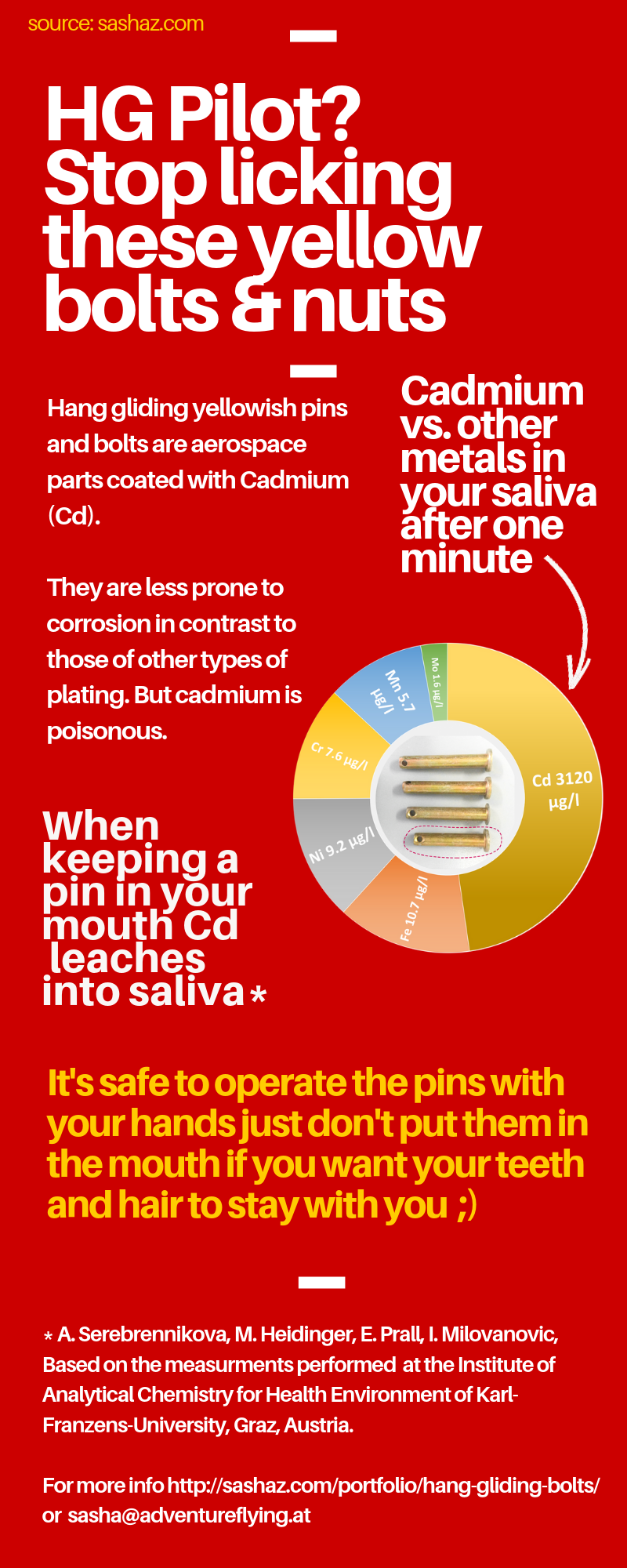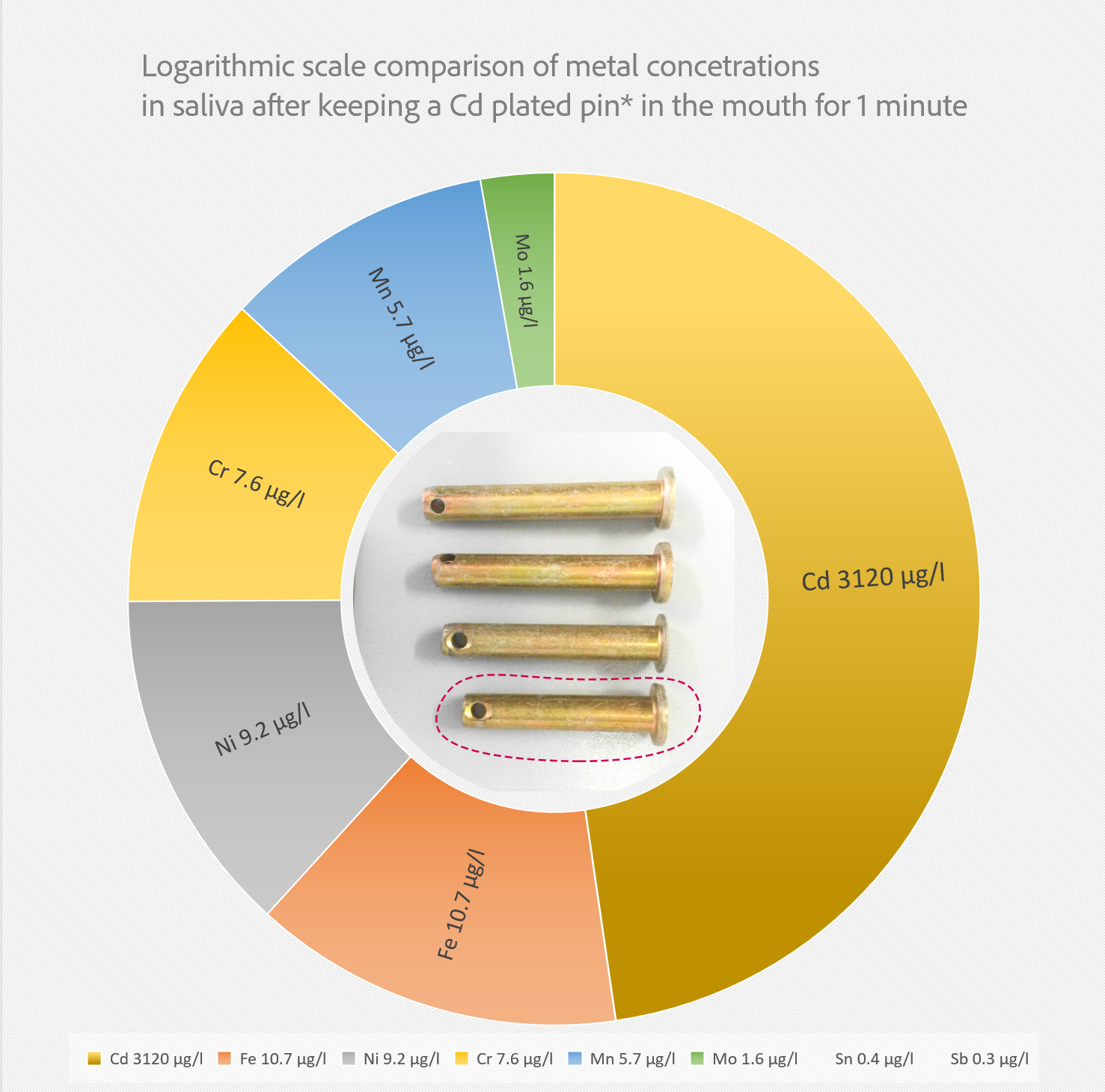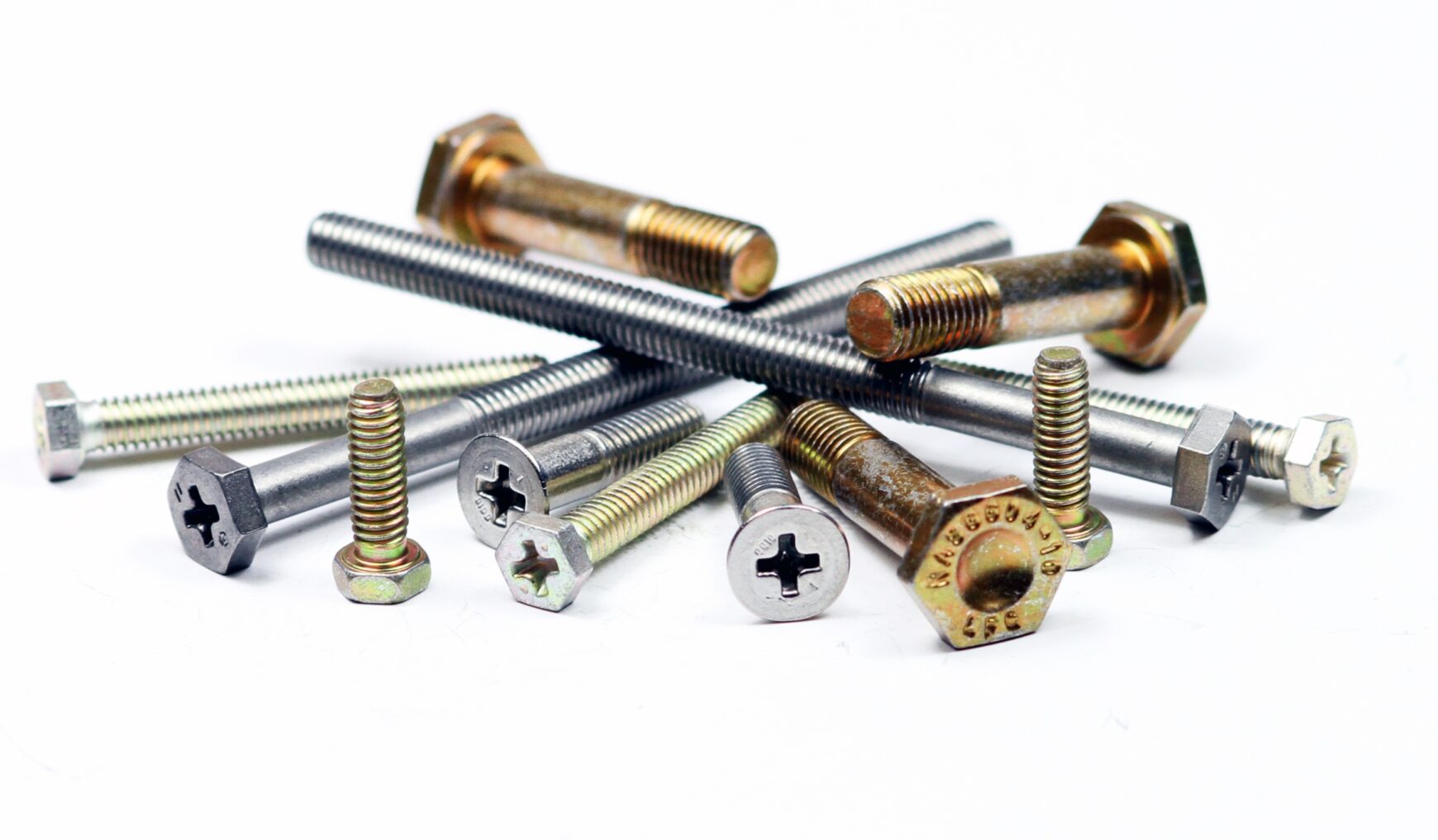 This time I invite you to a little scientific excursion into the world of materials. Have you ever asked yourself a question what is this yellow coating on most of the aviation bolts we are using in hang gliding?
This time I invite you to a little scientific excursion into the world of materials. Have you ever asked yourself a question what is this yellow coating on most of the aviation bolts we are using in hang gliding?
Well, it might be not relevant to flying, but it is important for your teeth and hair in case you have a habit to keep the nuts and pins in your mouth when assembling the glider.
Why?
Because this yellowish stuff is cadmium (Cd) which is plated on steel parts in aerospace applications for its superior corrosion resistance. Although suitable for many applications, cadmium is a very toxic metal [1].
But no worries, you are not gonna die just from having the bolts in your hands, the main concern is the uptake of cadmium through contaminated water and food, as well as from the smoke of cigarettes[2]. The solitary lethal dose for humans is estimated as 350‑3500 mg [3] – it’s huge amount, you’d need to swallow a few bolts at once to get this much of cadmium from the thin surface plating. However the problem of Cd for the human body is that this metal has an extremely long half-life time in human tissue, i.e. in the kidney for approximately 15 years [4].

All this means is, if you have a habit of holding the bolts and nuts in your mouth while assembling your hang glider, the chance is high that some amount of it leaches into your saliva and gets stored in some of your organs and tissues.
I have seen so many people doing it and as a chemist and material scientist was often asking myself a question:
How much of this cadmium actually gets into the saliva on these occasions?
Recently I had a project at the Institute of Analytical Chemistry for Health and Environment at Karl-Franzens University of Graz in Austria where I had a chance to perform some ICPMS measurements to answer this question. ICPMS stands for inductively coupled plasma mass spectrometry, the method which allows very precise analysis even of the tiniest concentrations (1 part per 1015 ) of stuff in liquid solutions.
To make the long story short, the result was that already after one minute in saliva, the concentration of Cd gets seriously high. I mean really high — 1000 times higher than that you’d want it to be! This means if you once in a while hold these cadmium plated parts in your mouth, in the long run your body might not be very grateful for it. There is no harm if you are touching these bolts — just keep them off the mouth.
 We’ve done the measurements of metals concentrations in an artificial saliva mimicking the real one. Apart from other experiments we kept bolts in this solution for 1, 5 and 15 minutes at the body temperature and compared the results to the original concentrations of an empty, ‘unbolted’ so to speak, saliva. If you are seriously interested in the scientific data I have attached the report file in the end of this post.
We’ve done the measurements of metals concentrations in an artificial saliva mimicking the real one. Apart from other experiments we kept bolts in this solution for 1, 5 and 15 minutes at the body temperature and compared the results to the original concentrations of an empty, ‘unbolted’ so to speak, saliva. If you are seriously interested in the scientific data I have attached the report file in the end of this post.





